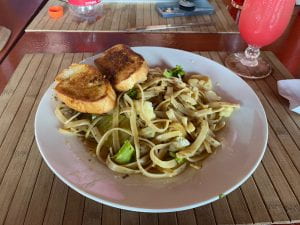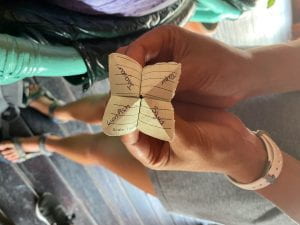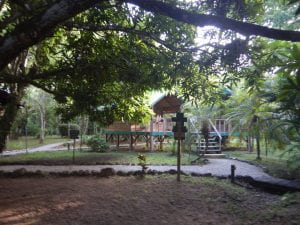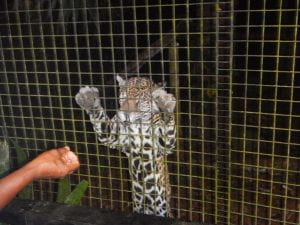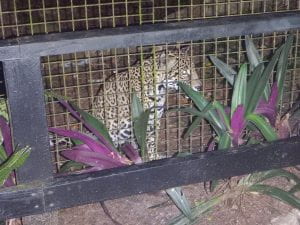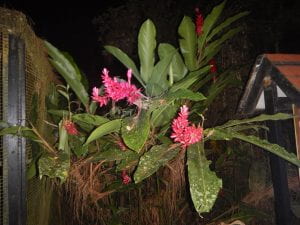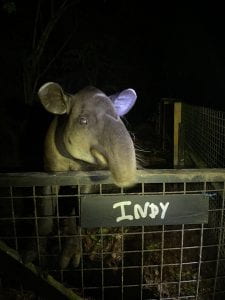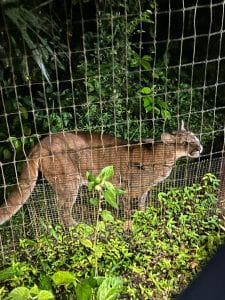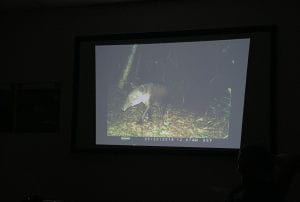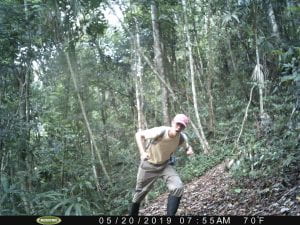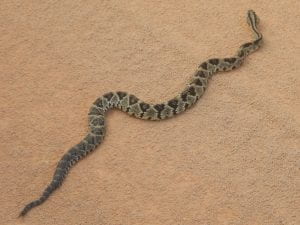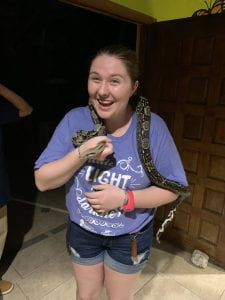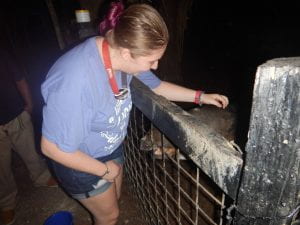Life finds a way, even deep into the pitch-black, flooded cave of Actun Tunichil Muknal. This cave system is the most magnificent place to exist, with arena-sized chambers full of stalactites, glimmering formations, and Maya remains. We saw intact skeletons, smashed vases, and shiny rock (polished by tourists’ butts as they climbed down). Most surprisingly, there were little seedlings sprouting from bat droppings and growing from the rock dust lining the surfaces above water level. Though they soon perish without light to photosynthesize, they were a gorgeous contrast to the black, white, and red cave (this cave was lined with speckled red walls because of its high iron content).
We also spotted a few dark black cave spiders, pale white cave catfish, and bats in their bellhole homes. These guys were better equipped to survive the darkness, with vision as we know it replaced with adaptations like echolocation and sensitivity to vibrations.
But the cave also showed evidence of what once existed–Maya sacrificial pots and skeletons dotted the ground, helping us to piece together their cultural practices and societal conditions. It seems that as a major prolonged drought progressed, Maya offerings became more severe, progressing from young adults to children to babies, potentially showing their desperation as they offered purer and purer gifts. Also, many of the skeletons we saw were modified to show prestige, with compressed skulls that resembled heads of corn (and the god of corn and crops, One Hunahpu) and filed teeth with patterned crevices. It was even proposed that one skeleton was a hostage due to its position with its arms tied behind its back.
Even though the remains only reveal a skeleton of what once was, our archeologist tour guide brought the scene to life. I could vividly imagine Mayan people starting a bonfire in the cave, illuminating the silhouette of a god (from the shadow of a stalactite crystal), and praying for water.
Fast forward 5 hours, we were in the darkness of nighttime, strolling through Belize’s lush, natural animal rescue zoo and being mowed down by wild green iguanas. We had just talked with this adorable river otter, offering it chicken as it squealed with delight, when we encountered a green lizard stuck on an electric fence with a bitten-off tail. To move it out of the way of the current, we poked it with a stick. In a frenzy, it flew off the fence and charged at Ian. When it realized it couldn’t get through him, it darted in the other direction into Sam. A good 30 seconds later, it started pouring outside. We got a good laugh, and the rain finally brought out the frogs for Elise (our expert), hoping along the tree-based epiphytes, like the common and gorgeous Philodendron sagittifolium. However, the tapir was not having it. We were lucky to say hi and feed it a few carrots, but it trotted off when the sprinkle turned into a pitter-patter.
(Poor Green Iguana – 05/23/25)
(Philodendron sagittifolium – 05/23/25)
Tonight I encountered so many new animals, like margaye (house cat-sized felines that were originally bred to interbreed with cats for their gorgeous coats), tapir (mammals known for their mini elephant trunk noses), and porcupines with prehensile tails (Mexican Hairy Dwarf Porcupine). I also discovered my new favorite mammal: the paca, the most adorable rodent I’ve laid eyes on, known as the “Royal rat,” because it was served to Queen Elizabeth II when she visited Belize. Also, American crocodiles can go a month without eating. The zoo only feeds them once a month because they digest so slowly.
(Adorable Paca – 05/23/25)
This zoo originated as an effort to rescue 20 mammals and turned into an animal rescue center and educational hotspot. The 160 individuals there were all saved from harsh or cruel circumstances, like as neglected pets, and were all natives of Belize.
On this trip, every minute is a learning experience. From exploring underground ecosystems to learning about Central American mammals, my understanding of ecosystem complexity and what goes on past the surface is growing, kind of like a leaf-cutter ant mound. I told Dr. Solomon that, from now on, I want to travel with an ecologist to keep doing the whole learning/vacationing thing. But even better, I will be that ecologist. For now, I’m excited to learn about the reef ecosystem and share my expertise about the sponge taxa.
(Wisdom from the Zoo – 05/23/25)
Peace,
Lily 🙂









